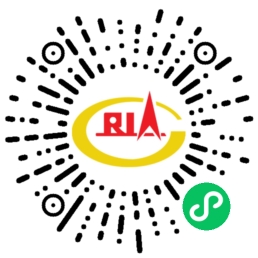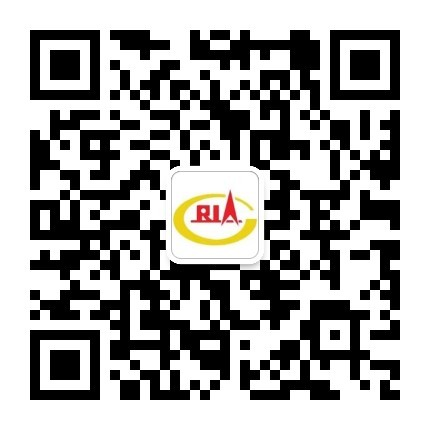Statistical data of CRIA Rubber Chemicals Special Committee showed that in the first quarter, the sales income of China’s rubber chemicals industry was 5.44 Billion Yuan, with a year-on-year (same below) decrease of 19%; the total output was 285000 tons, with a decrease of 12%; the export volume was 79000 tons, with a decrease of 14%; the export value was 1.17 Billion Yuan, with a decrease of 34%; the industrial profit rate fell by 44%; and the price of partial products hanged upside down seriously. “Rubber chemicals industry shall stabilize the supply and exploit new field of application as soon as possible to go through the difficult period.” The insider suggested.
Export Orders Declined Sharply
As introduced by Xu Chunhua, honorary president of CRIA Rubber Chemicals Special Committee, domestic output of rubber chemicals accounted for about 76% of overall global output and nearly 350000 tons of rubber chemicals were exported overseas each year in recent years. Since this year, global epidemic has had a large influence on the downstream tire market, the consumption has been dull and the export has been sluggish. In addition, America prepares to carry out anti-dumping and anti-subsidy investigation on the tires originating in Thailand, Vietnam, Korea and Taiwan, China, domestic rubber chemicals enterprises are facing a difficult moment.
“At the beginning of the first quarter, the shrinkage in order quantity of rubber chemicals industry was shown in domestic orders. The data of CRIA Tire Branch shows that in the first quarter, the output of comprehensive tire casing of China’s tire industry was reduced by 14.58%. Meanwhile, the decline in shipment of passenger car tires of main domestic tire dealers exceeded 50%. The influence of downstream depression on upstream rubber chemicals is obvious.” Wang Yandong, deputy secretary general of special committee, introduced: “In mid-February, rubber chemicals enterprises started to resume work and production gradually. With full hope, the enterprises finally waited for overseas epidemic outbreak, global tire giants stopped production one after another, the export of rubber chemicals faced unprecedented impacts, and the export volume in April also fell sharply.”
Wang Wenbo, chairman of Shandong Yanggu Huatai Chemical Co., Ltd., introduced that since the 2nd quarter, the tire production in Europe, America and India had been suspected, the operating rate of tire industry in Japan, Korea and Southeast Asia also fell sharply, at present, work resumption of domestic tire enterprises had become stable and the company was taking multiple measures to improve the operation.
The listed companies were in such a condition, the conditions of the medium- and small-sized enterprises can be imaged. Statistics of CRIA shows that currently, the export orders of some enterprises have fallen by 80%.
Partial Products had Serious Losses
Due to the epidemic, the price of the crude oil suffered a disastrous decline, however, acetone, the main raw material of anti-aging agent TMQ as well as the upstream raw material of anti-aging agent 6PPD, bucked the trend to go up, the price ran low from 5600 Yuan in January to 3900 Yuan at the beginning of April, then went up to 8400 Yuan at present. However, the price of anti-aging agents TMQ and 6PPD did not rise along with the price of acetone and most of the enterprises were at a loss, with the profit space out of the question.
While the price of anti-aging agents ran low, the price of accelerators also hit rock bottom. At present, the market of the main accelerator products, CBS and TBBS, is sluggish, the domestic and overseas demand falls sharply, to maintain operation, the enterprises basically deliver the goods for no profit.
“Since the fourth quarter of 2019, the oversupply contradiction of rubber chemicals has been obvious, which became worse after the breakout of the epidemic. The downstream consumption declined constantly, the inventory of the production enterprises kept high, the losses of individual anti-aging agent products reached 15%~20%; the accelerators also hit the bottom, with almost no profit, and the sale volume also showed a vertiginous drop.” Zhang Jiandong, deputy general manager of Kemai Chemical Co., Ltd., said.
“Through the investigation of CRIA on the member enterprises, it is found that some enterprises have been caught in a situation where ‘shutdown will cause losses and production will cause more losses’. However, some enterprises whose products are mainly applied to the epidemic prevention materials such as rubber gloves also realized growth against trend.” Gao Bo, secretary general of special committee, said.
Willing New Materials Technology Co., Ltd. is an example of growth against trend. Wang Zhiqiang, general manager of this company, expressed that although the sale of the company in January and February was bad, it operated at full load in April and May and its performance also hit new high. “All industries of rubber products are our clients. During the epidemic, everyone could not go out, fitness at home made the demand for yoga mat and sports equipment surge, let alone the demand for epidemic prevention materials such as rubber gloves and protective clothing. In addition, thanks to new infrastructure, the demand for supporting rubber pieces of rail traffic and 5G-related equipment was also further stimulated. Three sectors of our company, new infrastructure, healthy life and epidemic prevention materials, achieved good benefits.”
Ensure Market Supply and Expand Application
Due to the conduction effects of industrial chain, even the epidemic is over, the export situation will still be not optimistic for a long time period. For this, Wang Wenbo expressed that confidence was important to the industry, the more difficult the situation is, the more confidence should be stimulated, he believed that in the fourth quarter of 2020, the industry would gradually recover and the global market would become better.
Gao Bo expressed that ensuring the industrial chain and supply chain stable was one important work among “six stabilization”. Global production of rubber chemicals depended on China, once the industry was caught in a massive loss, it would cause the situation where the supply of the whole automobile-tire industrial chain was affected due to shortage of “aginomoto”. CRIA Rubber Chemicals Special Committee called upon the enterprises to be united, properly arrange the production according to the orders, stabilize the market supply, reduce vicious competition and make the value of rubber chemicals products return.
Xu Chunhua called upon the enterprises to constantly intensify scientific and technological innovation, exploit more non-tire terminal application fields and enhance the anti-risk ability of the enterprises to pull through.
Fei Yunping, general manager of Sales Center of Sinopec Nanjing Chemical Industries Co., Ltd., placed great expectations on CRIA and hoped that CRIA could give play to its role of tie between the government and the enterprises, enhance interaction, give more guidance to the enterprise in the aspect of development direction, promote the production enterprises to reach consensus and make concerned effort to maintain the healthy development of the market.




